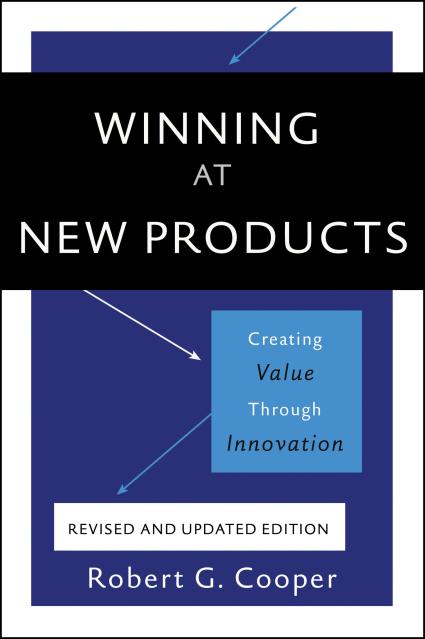Promotion
25% off sitewide. Make sure to order by 11:59am, 12/12 for holiday delivery! Code BEST25 automatically applied at checkout!
By clicking “Accept,” you agree to the use of cookies and similar technologies on your device as set forth in our Cookie Policy and our Privacy Policy. Please note that certain cookies are essential for this website to function properly and do not require user consent to be deployed.
Winning At New Products
Creating Value Through Innovation
Contributors
Formats and Prices
- On Sale
- Sep 19, 2017
- Page Count
- 448 pages
- Publisher
- Basic Books
- ISBN-13
- 9780465093328
Price
$24.99Price
$30.99 CADFormat
Format:
- Trade Paperback $24.99 $30.99 CAD
- ebook $16.99 $21.99 CAD
- Audiobook Download (Unabridged)
This item is a preorder. Your payment method will be charged immediately, and the product is expected to ship on or around September 19, 2017. This date is subject to change due to shipping delays beyond our control.
Buy from Other Retailers:
For more than two decades, Winning at New Products has served as the bible for product developers everywhere. Robert G. Cooper demonstrates why consistent product development is vital to corporate growth and how to maximize your chances of success. Citing the author’s most recent research, Winning at New Products showcases innovative practices by industry leaders to present a field-tested game plan for achieving product leadership. Cooper outlines specific strategies for making sound business decisions at every step-from idea generation to launch. This fully updated and expanded edition is an essential resource for product developers around the world.
“This is a must read. There’s so much new in this book, from how to generate the breakthrough ideas, picking the winners, and driving them to market successfully.” — Philip Kotler, Professor of International Marketing, Northwestern University, Kellogg School of Management
Genre:
-
"[Winning at New Products] has been a mainstay of product-development literature for fifteen years."Journal of Product Innovation Management
-
"Winning at New Products by Robert G. Cooper has a clear place on your book shelf and will be most helpful in your innovation battles to explain the many in-built limitations to others less informed yet involved in the decision process."InnovationManagement.se
-
"This is a must read. There's so much new in this book, from how to generate the breakthrough ideas, picking the winners, and driving them to market successfully."Philip Kotler, Professor Emeritus of Marketing, Northwestern University, Kellogg School of Management
-
"This book is an invaluable guide...It's full of best practices, practical methods and real-world illustrations that demonstrate how to succeed at product and service innovation."Dick Arra, Chief Technology Officer, ITT Corporation
-
"This book provides insights into the new approaches and offers very useful guidelines for creating a powerful innovation setting in your organization."Hannes Erler, Former Vice President of Innovation, Swarovski K.G.
Newsletter Signup
By clicking ‘Sign Up,’ I acknowledge that I have read and agree to Hachette Book Group’s Privacy Policy and Terms of Use

